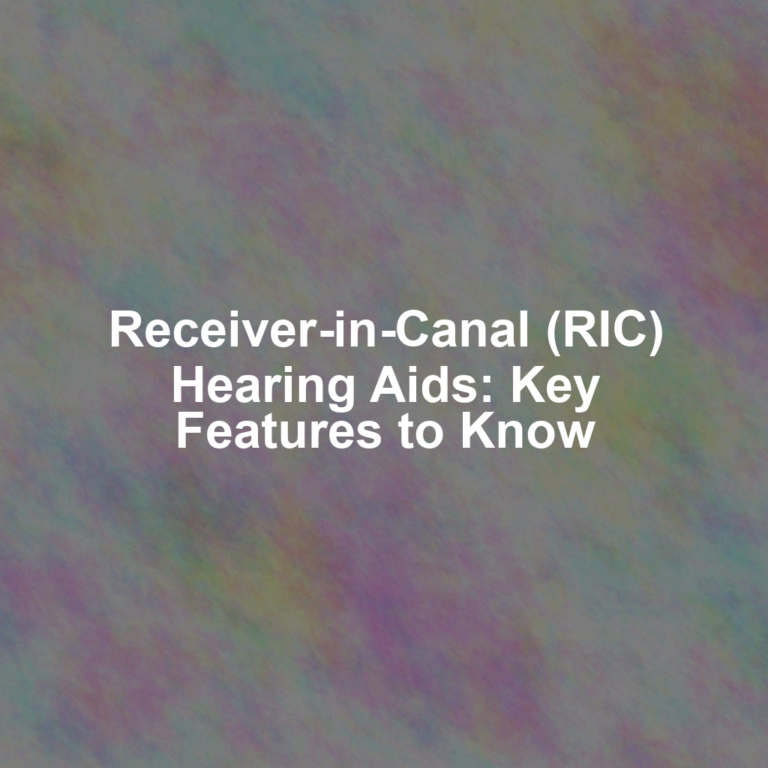If youG??re venturing into the world of enhanced auditory assistance, youG??ll find that the investment in behind-the-ear (BTE) hearing aids can vary as widely as the features they offer.
YouG??re likely seeking a balance between cost and quality, and itG??s essential to know what you can expect to spend before you make your choice.
The market offers a spectrum of BTE hearing aids, starting from the more economically friendly models that cover the basics, to the high-end devices that come with a steeper price tag but include advanced technology.
As you consider this significant personal investment, keep in mind that prices reflect not only the device itself but also the comprehensive care and support services that come with it.
To navigate this landscape effectively, youG??ll need to understand the nuances of pricing and what factors contribute to the total cost G?? some of which may surprise you as you explore the options available to you.
Understanding BTE Hearing Aid Costs
Grasping the cost of Behind-the-Ear (BTE) hearing aids requires exploring various factors that influence their price. YouG??ll find that technology level is a major determinant. Basic models provide amplification and minimal features, while premium ones offer advanced noise reduction, wireless connectivity, and customizable settings. ItG??s like comparing a basic cellphone to the latest smartphone G?? the more bells and whistles, the higher the price.
YouG??re also paying for the brand and quality. Renowned manufacturers charge more, but youG??re often getting better durability and customer service. DonG??t forget, youG??re not just buying a device; youG??re investing in your hearing health, which can dramatically improve your quality of life.
Additionally, consider the professional services included in the price. Fitting, programming, and follow-up adjustments by an audiologist can account for a significant portion of the cost. These services ensure that your hearing aids are tailored specifically to your needs.
Lastly, market competition and location can affect pricing. Shopping around and comparing prices can save you money, but itG??s crucial to ensure youG??re not compromising on quality care and service. Remember, the cheapest option isnG??t always the best when it comes to your hearing health.
Price Range for Basic Models
When looking at basic BTE hearing aids, youG??ll typically find prices ranging from $1,000 to $2,500 per unit. At this level, youG??re dealing with the essentialsG??devices that amplify sound adequately and offer fundamental features. You wonG??t get the bells and whistles of higher-end models, but youG??ll still enjoy improved hearing in everyday situations.
Within this price bracket, itG??s key to remember that youG??re not just paying for the device itself. The cost often includes a basic warranty, initial fitting, and some follow-up adjustments. YouG??ll want to factor in these services when comparing prices because they can significantly affect the value youG??re getting for your investment.
DonG??t assume that the cheapest option is the best for your needs. ItG??s worth considering the brandG??s reputation, the level of customer service, and the availability of support in your area. Sometimes, spending a bit more upfront can save you headachesG??and potential additional costsG??down the line.
Ultimately, your choice will hinge on what youG??re comfortable with, both in terms of budget and the features you consider non-negotiable. But rest assured, even at the basic level, youG??ll find options that can greatly improve your quality of life without breaking the bank.
Mid-Range BTE Features and Prices
While basic BTE hearing aids cover essential needs, mid-range models offer advanced features and better performance, typically costing between $2,500 and $4,000 per unit. When youG??re investing in a mid-range BTE hearing aid, youG??re not just paying for a device to hear better; youG??re paying for the quality of life improvements that come with clearer sound and more sophisticated technology.
HereG??s what you can expect from these mid-range marvels:
- Directional Microphones: YouG??ll experience enhanced speech understanding in noisy environments because these mics focus on the sound coming from in front of you.
- Wireless Connectivity: Stream phone calls, music, and TV directly to your hearing aids, making them double as high-quality earphones.
- Feedback Suppression: Say goodbye to annoying whistling sounds; this feature smartly eliminates feedback.
- Multiple Listening Programs: Tailor your hearing experience to different environments, whether youG??re at a quiet dinner or a bustling mall.
- Durability and Water Resistance: Mid-range models are often built to withstand the rigors of daily life, with some level of resistance to moisture and dust.
Premium BTE Hearing Aid Investment
Investing in a premium BTE hearing aid means youG??re getting the pinnacle of auditory technology, often costing upwards of $4,000 per unit, which includes the most advanced features for exceptional sound quality and comfort. At this high-end market segment, youG??re not just buying a device; youG??re investing in a comprehensive hearing solution tailored to your lifestyle.
With a premium BTE model, youG??ll benefit from cutting-edge noise reduction algorithms, which work seamlessly to provide you with clear conversation even in the noisiest environments. YouG??re also looking at superior connectivity options, allowing you to effortlessly sync with smartphones, TVs, and other devices. These hearing aids often feature rechargeable batteries, eliminating the need for frequent replacements and ensuring youG??re always powered up for your day.
Moreover, the investment goes beyond the device itself. Premium models typically come with a robust warranty, often covering loss and damage, and include follow-up care with a hearing professional. This means youG??ll have personalized adjustments and ongoing support to ensure optimal performance over time.
While the upfront cost is significant, remember that youG??re paying for a blend of comfort, innovation, and personalized care, which can significantly enhance your quality of life. Make sure to consider your priorities and long-term hearing health when making this investment.
Additional Costs and Considerations
Before you commit to a BTE hearing aid, consider the additional expenses such as maintenance costs, replacement parts, and potential out-of-pocket fees for professional services. These can add up, and youG??ll want to be prepared for them.
HereG??s what you need to keep in mind:
-
Batteries or Charging Units: BTE aids either need regular battery replacements or charging units if theyG??re rechargeable. Factor in the cost of batteries or the electricity to charge your device.
-
Warranties and Service Plans: Extended warranties or service plans might be a smart investment to cover repairs or loss, but they do come at an additional price.
-
Cleaning and Maintenance Tools: YouG??ll need to purchase tools and supplies to keep your hearing aid in tip-top shape, which can include special cleaning solutions and brushes.
-
Professional Fittings and Adjustments: Initial fitting might be included, but future adjustments might cost extra, especially if you go to a provider who didnG??t sell you the hearing aid.
-
Insurance: Some insurance plans offer coverage for hearing aids, but they may not cover everything, so check what your plan includes and what youG??ll need to pay for.
Conclusion
YouG??ve seen that BTE hearing aids come at various prices, from basic to premium. While basic models are wallet-friendly, mid-range ones offer more features. Investing in premium BTEs, however, means top-notch sound and advanced tech.
But donG??t forget, the price tag isnG??t the end. Consider additional costs like batteries, maintenance, and insurance. Choose wisely, balancing your needs with your budget, to ensure you get the best hearing experience without breaking the bank.










